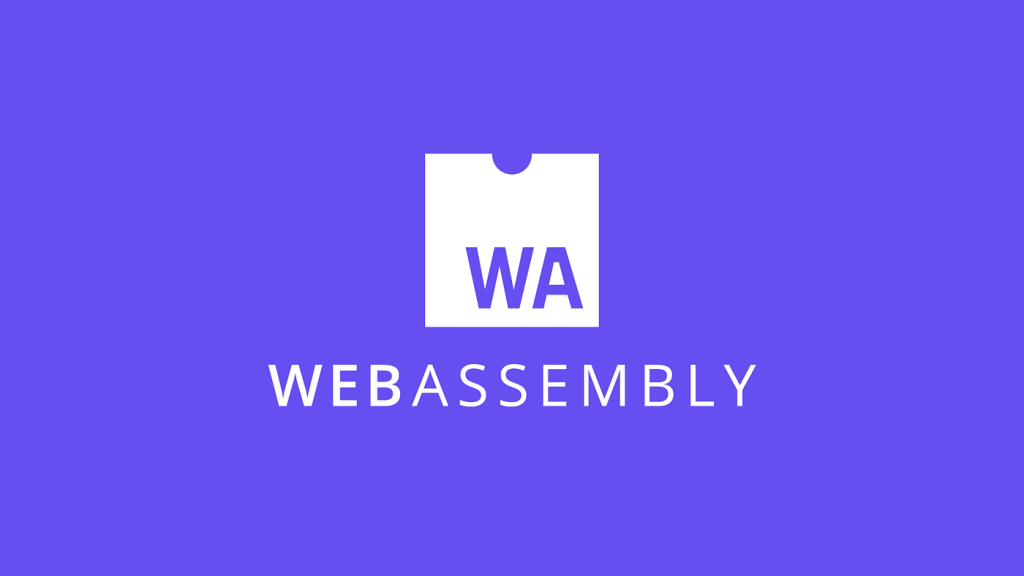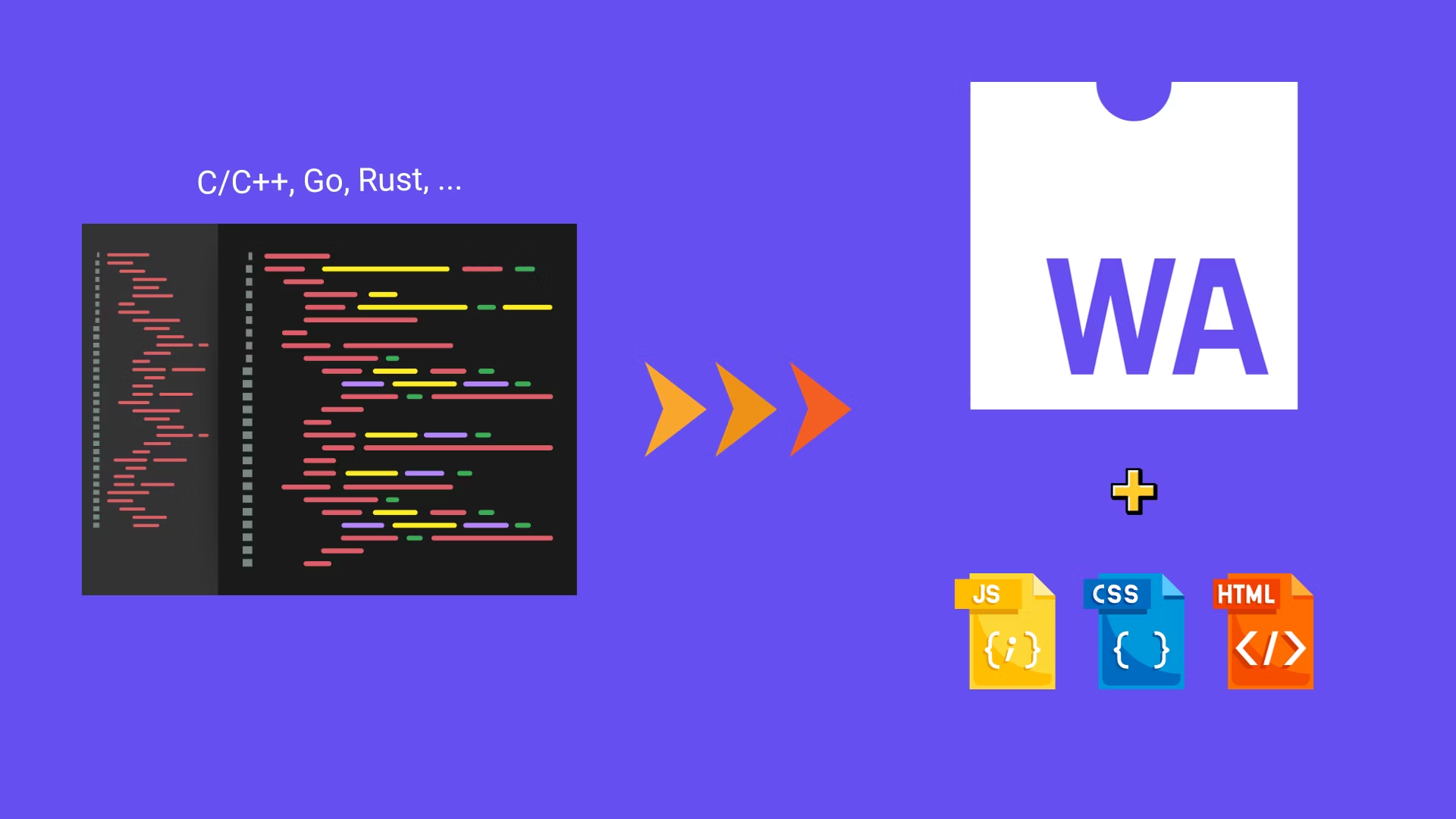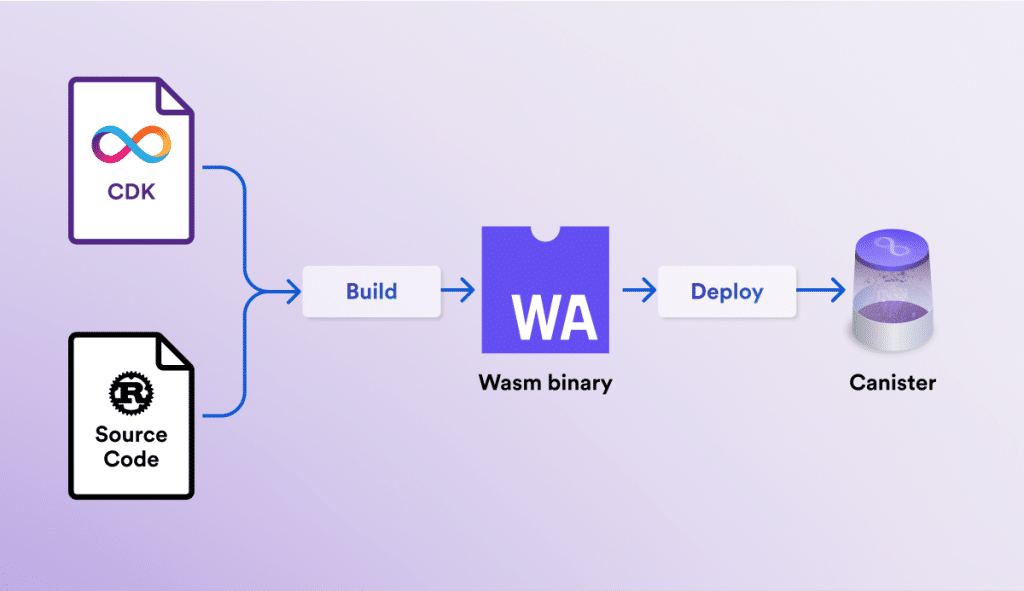As performance demands escalate in the digital landscape, the emergence of WebAssembly as a pivotal technology warrants a closer examination. Its promise of revolutionizing web application development by enhancing speed, efficiency, and security cannot be overlooked. The potential of WebAssembly in critical applications holds significant implications for developers navigating the complexities of modern web solutions. By offering near-native performance, this innovative technology opens new doors for optimizing application performance in challenging environments. The discussion ahead will shed light on how WebAssembly is reshaping the performance-centric paradigm of web development, setting the stage for a compelling exploration of its capabilities.
Understanding Custom Web Development with WebAssembly
As developers navigate the realm of custom web development with WebAssembly, understanding its key components is paramount. By grasping how WebAssembly transforms the landscape of web development, developers can harness its potential to enhance performance and efficiency. This shift towards WebAssembly signifies a significant evolution in how developers approach building and optimizing web applications.
Key Components of WebAssembly for Developers
In the realm of WebAssembly for developers, understanding the WebAssembly Binary Format and exploring the WebAssembly Text Format (WAT) are paramount. These key components serve as the foundation for leveraging the power and efficiency of WebAssembly in custom web development. By mastering these components, developers can unlock the full potential of WebAssembly in building high-performance web applications.
Understanding the WebAssembly Binary Format
Exploring the intricate WebAssembly Binary Format unveils the core components essential for developers to master in custom web development with WebAssembly. Compared to JavaScript, WebAssembly offers superior performance, exemplified by platforms like Blazor WebAssembly. Understanding the binary format is crucial for optimizing application criticality matrix and overall performance, empowering developers to harness the full potential of WebAssembly in creating high-performing web applications.

Exploring the WebAssembly Text Format (WAT)
The WebAssembly Text Format (WAT) serves as a foundational element for developers seeking to delve into the intricacies of custom web development with WebAssembly, providing key components essential for optimizing application performance and functionality. WAT allows developers to write WebAssembly modules in a human-readable format, facilitating easier comprehension and debugging. This text-based representation aids in understanding the underlying structure and operations of WebAssembly code.
How WebAssembly Transforms Custom Web Development
WebAssembly’s integration into custom web development marks a significant advancement in optimizing application performance for demanding environments. Developers now have a powerful tool at their disposal to enhance web applications in ways previously unattainable. Here are some key ways WebAssembly transforms custom web development:
- Near-native performance: WebAssembly allows for near-native performance, rivaling that of traditionally compiled languages.
- Improved efficiency: By leveraging WebAssembly, developers can streamline their code and improve the overall efficiency of their applications.
- Enhanced security: WebAssembly’s sandboxed execution environment enhances the security of web applications by mitigating certain vulnerabilities.
- Cross-platform compatibility: With WebAssembly, developers can build applications that run seamlessly across different platforms without compromising performance.
Comparative Analysis: WebAssembly vs JavaScript Performance
As we progress into the discussion of ‘Comparative Analysis: WebAssembly vs JavaScript Performance’, it is essential to consider the performance benchmarks of both technologies. Understanding how WebAssembly and JavaScript stack up against each other in terms of speed, memory usage, and overall efficiency provides valuable insights into their respective capabilities. By analyzing these performance metrics, developers can make informed decisions about the most suitable technology for their performance-critical applications.
Performance Benchmarks: WebAssembly vs JavaScript
In performance-critical applications, the comparison between WebAssembly and JavaScript regarding their respective performance benchmarks reveals significant insights into their efficiency and throughput capabilities. When analyzing the performance benchmarks of WebAssembly and JavaScript, several key points emerge:
- Execution Speed: WebAssembly demonstrates faster execution speed compared to JavaScript.
- Resource Utilization: WebAssembly tends to have lower resource utilization, leading to more efficient performance.
- Scalability: WebAssembly showcases better scalability when handling complex computations.
- Consistency: WebAssembly shows more consistent performance across different browsers and platforms.
The Role of WebAssembly in Enhancing Application Criticality Matrix
The integration of WebAssembly technology plays a pivotal role in elevating the application criticality matrix by enhancing performance and scalability in modern web development environments. WebAssembly’s ability to execute near-native code in web browsers empowers developers to build high-performance applications that can meet the demands of performance-critical scenarios. By leveraging WebAssembly, developers can significantly improve the responsiveness and speed of web applications, leading to enhanced user experiences and increased efficiency.
One key aspect where WebAssembly enhances the application criticality matrix is in its support for performance-intensive tasks that are essential for critical applications. Tasks such as complex computations, data processing, and graphics rendering can be offloaded to WebAssembly modules, allowing the main application thread to focus on critical operations. This segregation of tasks ensures that the application remains responsive even when handling computationally intensive processes.
Furthermore, WebAssembly’s portability and interoperability enable developers to create applications that can run consistently across different platforms and devices, contributing to the robustness of the application criticality matrix. This cross-platform compatibility reduces the risk of performance discrepancies and ensures a seamless user experience regardless of the user’s device or browser.
In essence, the adoption of WebAssembly in web development not only enhances performance but also strengthens the application’s criticality matrix by improving reliability, scalability, and consistency in demanding environments.
Integrating Blazor WebAssembly into Existing Development Stacks
Blazor WebAssembly’s integration into existing development stacks presents developers with a step-by-step guide and addresses the challenges they may encounter during adoption. Understanding the process of incorporating Blazor WebAssembly and finding effective solutions for potential hurdles are crucial aspects that will be explored in detail. By navigating through the integration procedure and strategizing solutions, developers can harness the full potential of Blazor WebAssembly within their development environments.
Step-by-Step Guide to Integrating Blazor WebAssembly
How can existing development stacks be seamlessly enhanced by integrating Blazor WebAssembly? Blazor WebAssembly offers a straightforward approach to integrating powerful features into current development environments. Here’s a step-by-step guide to help you seamlessly integrate Blazor WebAssembly:
- Install the necessary tools: Begin by installing the required tools such as the .NET SDK and Visual Studio.
- Create a new Blazor WebAssembly project: Use the appropriate project template to set up a new Blazor WebAssembly project.
- Add components and services: Customize your project by adding components and services to meet your specific requirements.
- Build and run your application: Finally, build and run your application to see Blazor WebAssembly in action within your existing development stack.
Challenges and Solutions in Adopting Blazor WebAssembly
Integrating Blazor WebAssembly into existing development stacks presents a series of challenges that require strategic solutions for seamless adoption. One major challenge is the compatibility with existing frameworks and libraries, especially if they heavily rely on JavaScript. Transitioning these components to work harmoniously with Blazor’s .NET environment demands careful planning and potentially rewriting parts of the codebase. Another obstacle lies in the learning curve for developers unfamiliar with Blazor and WebAssembly concepts, necessitating training and upskilling initiatives. Additionally, ensuring optimal performance and debugging capabilities in a WebAssembly-based application can be intricate due to the inherent differences in execution compared to traditional web technologies. Addressing these challenges through meticulous planning, training, and performance optimization strategies is vital for successful Blazor WebAssembly integration.

Why Choose WebAssembly for Performance-Critical Applications?
When considering high-performance web applications, choosing WebAssembly for performance-critical scenarios presents a compelling solution due to its near-native execution capabilities and efficiency enhancements. WebAssembly stands out for its ability to significantly boost performance in demanding environments, making it a top choice for developers aiming to maximize the efficiency of their applications. Here are some reasons why WebAssembly is a preferred technology for performance-critical applications:
- Near-Native Performance: WebAssembly allows applications to achieve near-native performance levels, bridging the gap between web-based and native applications.
- Efficiency Enhancements: By providing a compact binary format that can be efficiently parsed and executed by modern web browsers, WebAssembly minimizes load times and enhances overall application responsiveness.
- Cross-Platform Compatibility: WebAssembly’s platform-independent nature ensures that applications can run seamlessly across different operating systems and architectures, enhancing their reach and usability.
- Enhanced Security: With its sandboxed execution environment, WebAssembly offers an additional layer of security, protecting applications from malicious code and potential vulnerabilities.
These advantages make WebAssembly an attractive option for developers looking to build performance-critical applications that deliver exceptional speed, efficiency, and security without compromising on cross-platform compatibility.
The Technical Architecture of WebAssembly
WebAssembly’s technical architecture intricately combines key components to enable efficient execution of code within web browsers, playing a pivotal role in enhancing application performance for critical scenarios. At its core, WebAssembly is designed as a low-level programming language with a compact binary format that allows for fast decoding and efficient execution. This binary format is crucial for reducing load times and enabling near-native performance in web applications.
One of the primary components of WebAssembly’s architecture is the stack machine, which operates based on a virtual stack to execute instructions efficiently. This design choice enables WebAssembly to deliver high-performance computation while remaining platform-independent. Additionally, WebAssembly utilizes a linear memory model that provides a contiguous memory space for runtime operations, allowing for direct interaction with the host environment.
Furthermore, WebAssembly’s architecture includes a sandboxed execution environment that enhances security by isolating code execution from the underlying system. This approach ensures that code running within WebAssembly modules cannot access sensitive resources without explicit permission, contributing to a more secure browsing experience.
Optimization Techniques in Custom Web Development with WebAssembly
To enhance the performance of custom web development projects, incorporating advanced optimization techniques with WebAssembly is paramount. When leveraging WebAssembly for custom web development, developers can employ various optimization strategies to further enhance the speed, efficiency, and overall performance of their applications. Some key optimization techniques include:
- Dead Code Elimination: By removing unused code segments, developers can reduce the size of the WebAssembly module, leading to faster load times and improved performance.
- Function Inlining: Inlining small functions can help eliminate the overhead of function calls, reducing latency and improving execution speed.
- Memory Optimization: Utilizing linear memory efficiently and minimizing unnecessary memory operations can significantly boost the performance of WebAssembly applications.
- Algorithmic Improvements: Optimizing algorithms and data structures can have a profound impact on the overall performance of custom web development projects, making them more efficient and scalable.
Security Considerations in WebAssembly Applications
Security remains a paramount concern in the implementation of WebAssembly applications, necessitating vigilant measures to safeguard against potential vulnerabilities and threats. WebAssembly introduces a new attack surface to web applications, raising concerns about security risks such as sandbox escapes, denial-of-service attacks, and data leakage. One of the primary security considerations in WebAssembly is the potential for malicious actors to exploit vulnerabilities in the runtime environment, compromising the integrity and confidentiality of sensitive data.
To mitigate these risks, developers should adhere to best practices such as validating and sanitizing inputs, implementing proper access control mechanisms, and conducting thorough security audits. Additionally, leveraging tools like Content Security Policy (CSP) to control the resources that a WebAssembly module can access can help prevent unauthorized actions within the application.
Furthermore, ensuring the secure transmission of WebAssembly modules over the network and validating the authenticity of modules before execution are essential steps in preventing code injection attacks and ensuring the trustworthiness of the code being executed. By prioritizing security considerations and following industry-standard security protocols, developers can harness the performance benefits of WebAssembly while mitigating potential security vulnerabilities in their applications.

Future Trends in WebAssembly and Custom Web Development
Amid the evolving landscape of web development technologies, the trajectory of custom web development is increasingly intertwined with the future trends shaping the utilization of WebAssembly. As this cutting-edge technology continues to gain momentum, several key trends are emerging that are set to revolutionize custom web development practices:
- Increased Adoption Across Industries: WebAssembly is being adopted by a diverse range of industries, from finance to gaming, indicating its versatility and broad applicability.
- Enhanced Tooling and Ecosystem: The development of new tools and a growing ecosystem around WebAssembly are streamlining the process of integrating it into custom web development projects.
- Improved Browser Support: Major browsers are continuously enhancing their support for WebAssembly, ensuring broader compatibility and a more seamless user experience.
- Integration with Cloud Services: The integration of WebAssembly with cloud services is opening up new possibilities for scalable and performance-driven web applications.
These trends signal a promising future for WebAssembly in custom web development, offering developers unprecedented flexibility and efficiency in building high-performance web applications across various industries. By staying abreast of these trends and leveraging the capabilities of WebAssembly, developers can unlock new opportunities for innovation and optimization in their projects.
Comprehensive Software Development Solutions
Unlock the potential of digital transformation with our bespoke software development services, engineered to foster innovation, maximize efficiency, and catalyze business growth.
Happy Digital’s Best Practices for Deploying WebAssembly in Production Environments
As organizations embrace WebAssembly for performance-critical applications, it is crucial to implement best practices for deploying it in production environments. Monitoring and maintaining WebAssembly applications are vital to ensure their scalability and reliability under demanding conditions. By adhering to Happy Digital’s recommended strategies, businesses can optimize the performance and efficiency of their web applications effectively.
Monitoring and Maintaining WebAssembly Applications
For developers looking to optimize the performance and reliability of their web applications, mastering the monitoring and maintenance of WebAssembly applications according to Happy Digital’s best practices for deploying in production environments is paramount.
- Real-time Performance Monitoring: Utilize tools to track and analyze the performance of WebAssembly applications.
- Automated Error Logging: Implement automated error logging mechanisms to swiftly identify and resolve issues.
- Version Control and Rollback Strategies: Maintain version control and establish rollback strategies to manage updates effectively.
- Security Auditing: Conduct regular security audits to ensure the integrity and safety of WebAssembly applications.
Ensuring Scalability and Reliability in Production
To ensure the successful deployment of WebAssembly applications in production environments, adherence to Happy Digital’s best practices for scalability and reliability is fundamental. Scalability in WebAssembly applications involves designing systems that can handle increased loads by efficiently utilizing resources. It is essential to consider factors like load balancing, horizontal scaling, and efficient resource management to accommodate growing user bases. Reliability, on the other hand, focuses on ensuring consistent performance and uptime. Employing strategies such as fault tolerance, error handling, and monitoring tools is crucial for maintaining a reliable application in production. By following these best practices, organizations can harness the full potential of WebAssembly while delivering high-performing and dependable web applications to their users.
Conclusion
In conclusion, WebAssembly emerges as a transformative technology in the realm of performance-critical web applications, offering unparalleled speed, efficiency, and security compared to traditional JavaScript. Its near-native performance capabilities and compatibility with existing development stacks make it a compelling choice for developers looking to optimize application performance in demanding scenarios. As businesses increasingly rely on complex web solutions, the adoption of WebAssembly is poised to reshape bespoke web development practices and drive innovation in the digital landscape.
What is WebAssembly and how does it improve performance in web applications?
WebAssembly (often abbreviated as Wasm) is a binary instruction format for a stack-based virtual machine. It enables code written in multiple languages to run with near-native performance on the web. WebAssembly provides a more efficient approach than JavaScript in processing and executing code, making it ideal for performance-critical applications that require complex calculations and real-time processing.
How does WebAssembly compare to JavaScript in terms of execution speed?
WebAssembly is designed to enable much faster parsing and execution compared to JavaScript. While JavaScript is parsed during runtime, WebAssembly lets developers take advantage of pre-compiled binaries that the browser can execute immediately. This results in significantly faster execution, making WebAssembly suitable for applications that demand high performance and speed.
Can WebAssembly be used with existing JavaScript frameworks?
Yes, WebAssembly is designed to work alongside JavaScript, allowing developers to use both technologies in tandem. This compatibility enables the integration of WebAssembly modules into existing JavaScript frameworks and applications, providing a boost in performance for critical parts of the application without a complete rewrite.
What are the security implications of using WebAssembly in web applications?
WebAssembly maintains a high level of security by executing code in a sandboxed environment, similar to JavaScript. This isolation helps prevent malicious actions from affecting the host environment. However, developers must still ensure that the code compiled into WebAssembly is secure and that all data handling complies with best security practices to mitigate risks like buffer overflow exploits.



